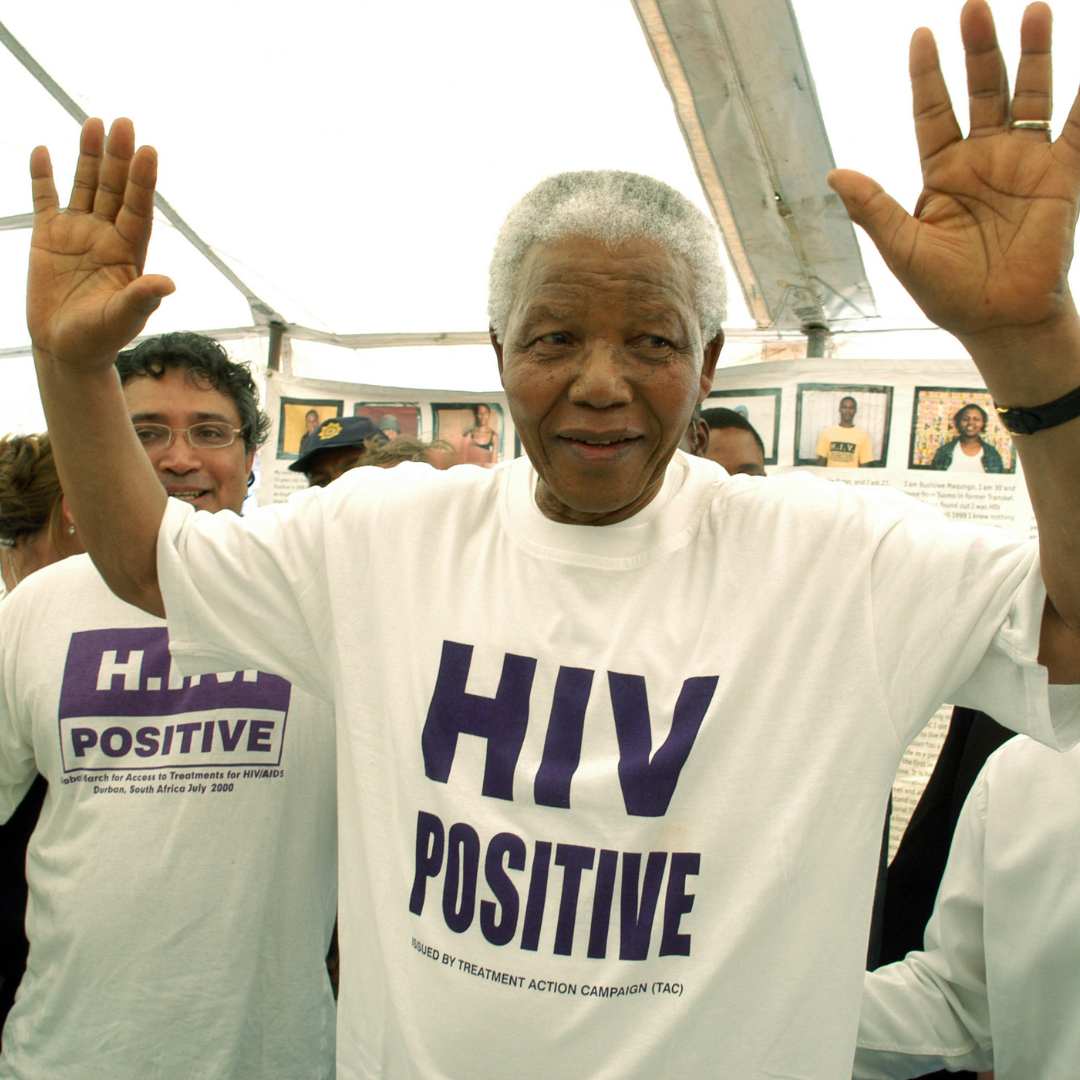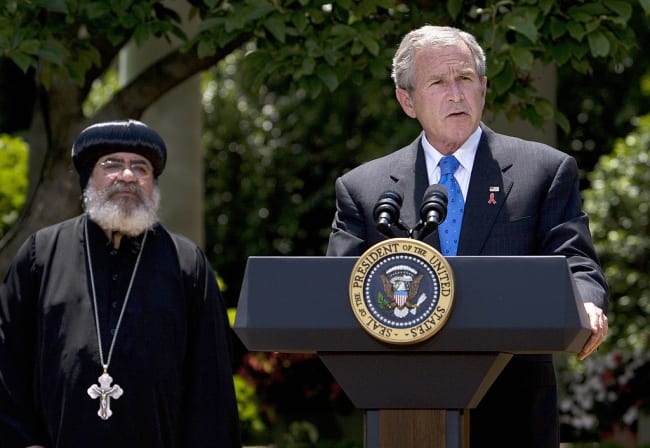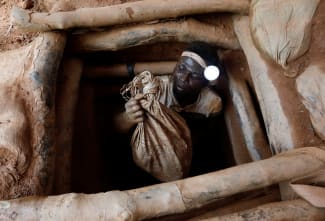Quarraisha Abdool Karim, professor in clinical epidemiology at Columbia University, and president of The World Academy of Sciences, spoke with Think Global Health about the arc of HIV/AIDS-fighting efforts in South Africa, her home country. She also discussed her research and leadership over the past thirty-four years, how PEPFAR and the Global Fund have altered South Africa's health landscape, and the final lap in the battle to eradicate HIV/AIDS.
□ □ □ □ □ □ □ □ □ □ □ □ □ □ □
Think Global Health: Your career as an epidemiologist and health leader in South Africa and globally has spanned three decades. Can you share some of the milestones in your professional life and South Africa's fight against HIV/AIDS along the way?
Quarraisha Abdool Karim: I started doing AIDS research in 1989, at a time where people in South Africa didn't think they would see a democracy in our lifetimes. I had just trained at Columbia University and was exposed to the AIDS epidemic in the United States through my classes. Returning to South Africa, I was looking at applying some of that knowledge that I had garnered in the United States. The big gap was that we had no idea what the nature of the HIV epidemic in South Africa was. In 1989, I did one of the first population-based surveys that year. It was published in 1990. That was an important milestone—it was the beginning of my research in HIV.
I started doing AIDS research in 1989… we found that women were infected two to four times more compared to men
I did this population-based survey that was piggy-backed with the active malaria control program. And that highlighted that we were at a very early stage of the HIV epidemic in the general population. We found that women were infected two to four times more compared to men. So, what followed was me trying to monitor the evolving epidemic and developing technologies that women can use to remain uninfected as there was a disconnect between what was available for prevention and where the problem was.
What we were dealing with in 1990 was the silent spread of HIV—not AIDS, as we saw in East Africa, West Africa, and even in industrialized countries. Other key milestones include: being appointed to establish the South African National AIDS Programme by the Mandela Administration in 1995 was an important milestone in terms of translating research to policy and programmes; initiating the nurse-initiated ARV treatment program in rural KwaZulu-Natal in 2004; demonstrating when to initiate treatment in HIV-TB co-infected patients, the 2010 announcement of the CAPRISA 004 tenofovir gel trial results that laid the foundations for PrEP; more recently the 'cycle of transmission' using phylogenetics to demonstrate unequivocally how young women are acquiring HIV infection.
Think Global Health: When did HIV/AIDS become an epidemic in South Africa?
Quarraisha Abdool Karim: What we saw between 1990-1995 was an exponential increase in HIV infection in the general population where HIV prevalence increased from less than 1 percent to over 20 percent among pregnant women—a marker of spread in the general population. In 1995 we were starting to see an increase in AIDS cases and the ongoing spread of new HIV infections.
At that time, I was a member of the Governing Council, at the African Academy of Sciences. I posed the question, "Why is it that we have not had an AIDS conference in Africa, when we have most of the patients here?" And the response was, "Well, we've never had anyone from a developing country make the request to host the conference." So, I discussed this with different people in South Africa and it happened—the International AIDS Conference was held in Durban, South Africa, in 2000.
Two years before the conference, we started to see a change in the HIV epidemic. Initially, we were seeing the impact of mother to child transmission. In 1997, we were starting to see the changing face of the epidemic with more infants being admitted to hospital and dying within the first year of life and a rise in hospital admission. The demand for interventions to prevent mother-to-child transmission was growing.
At the same time, what we started to see was an increase in adult deaths. Patients were dying from AIDS. And we're watching the United States and seeing the benefits of antiretroviral treatment not available in Africa. The best we could do in many of our countries was treat the opportunistic infections. What was significant was the loss of hundreds of thousands of young lives from AIDS to the extent that life expectancy was substantially reduced in both men and women and many children being orphaned or taken care by grandmothers.
Think Global Health: Did you have the support of your government leadership at the time in South Africa?
Quarraisha Abdool Karim: In 2000, we were having the AIDS conference and we also had a new president in 1999, Thabo Mvuyelwa Mbeki. At a time where grandmothers were weeping about the multiple children they'd lost to AIDS and there was sickness all around you, he was questioning does HIV cause AIDS?
We were facing denialism from the president and the minister of health, who had no interest in making information [for prevention or treatment] available to the public or communities most impacted by HIV and AIDS. In addition to the lack of government support, the lifesaving ARV drugs were too expensive and simply unaffordable for most in the public and private sector.
But the day before the opening of the thirteenth International AIDS Conference in 2000, as a scientist and activist, I saw a real show of global solidarity highlighting the issues around equal ARV treatment access. A few years later, PEPFAR and the Global Fund were set up as important instruments to give substance to the global solidarity. I think this was directly linked to this visibility of the devastating impact of AIDS in Africa. People in leadership outside of Africa, and in Africa, saw the importance of treatment access, and those two mechanisms were set up to facilitate that matched with substantial reductions in drug prices to about $1 a day. This level of global solidarity fueled by a moral obligation from industrialized countries was and remains quite unprecedented in public health.

Think Global Health: What did PEPFAR and Global Fund support look like when it came to South Africa?
Quarraisha Abdool Karim: The difference between the Global Fund and PEPFAR is that Global Fund worked directly with governments—and it was a mixed bag of governments in Africa, some happy to work on HIV and some not, including in South Africa. Initially, the Global Fund spent almost two years negotiating with the South African government, that was in denial about AIDS and the role of ARV treatment.
In contrast from the outset PEPFAR worked in partnership with existing US partners and collaborators. In South Africa. PEPFAR said, "We're working with the NIH-funded projects, we're working with NGOs, and not necessarily directly with government." So, we were immediately able to start providing antiretroviral treatment to patients in the communities we were undertaking HIV and AIDS research in. CAPRISA did receive Global Fund support, but it took almost two years to get there. In contrast, PEPFAR funding enabled us to initiate ARV treatment programs almost immediately.
Both mechanisms are important. Both were about solidarity. One chose to work with government, one chose to work with whoever is ready to work—academia, NGOs and prioritized 13 countries in Africa. Drug prices came down. I think it made a huge difference.
PEPFAR also took a very data-driven approach which meant that their responses would be prioritized based on data, and then they would expand that as more and more evidence became available in terms of what was happening in a country and fill important gaps. That gives a sort of synopsis of the entirety of PEPFAR and Global Fund in South Africa in particular, and to some extent in Africa.
Think Global Health: You've worked now for more than thirty years on HIV/AIDS initiatives. Have you accomplished what you'd hope to do at the start?
Quarraisha Abdool Karim: I have highlighted some of the key research milestones above. While we have much to celebrate as a global community in setting new precedents in our HIV response, sadly we still have much to do in HIV and related epidemics before we can say we are done. A vaccine and a cure are essential to end AIDS but with the tools we have we can achieve the UN 2030 goal of ending AIDS as a public health threat. We have to keep reminding everyone, especially key decision makers and donors, that we're not over with HIV and now is not the time to take our foot of the accelerator and reverse the gains made to date. And neither are we over with TB nor malaria. With HIV, the challenge has been in primary prevention of HIV infection. The focus on test and treat hasn't quite translated to population-level benefits. Make no mistake, we have been able to really turn this epidemic around in terms of people living with AIDS and HIV, in terms of the millions put onto treatment, in terms of the laboratory and supply chain infrastructure, in terms of diagnostics and point of care tests for monitoring therapeutic success, in terms of strengthening health-care delivery systems including the appointment of lay counsellors and community health workers, in terms of nursing and medical educational programs, and notably the DREAMS Project focused on adolescent girls and young women. We've made a massive, massive impact and are close to elimination of mother-to-child transmission.
As we get to the last mile, what becomes more acutely apparent is who we are leaving behind
Think Global Health: COVID threw a wrench in health-care access and services everywhere. How has the pandemic affected people with HIV in South Africa?
Quarraisha Abdool Karim: With COVID, we saw what typically happens when you have a new epidemic; you drop the ball on other [existing] epidemics and pandemics and focus on what's new. With primary prevention, we were already off target by the time COVID came along. But the innovations in terms of treatment delivery and peer support groups meant that people with HIV didn't have too many treatment interruptions [during COVID]. We've had some issues around supply chain issues, but by and large, people on treatment continue to do well.
We have seen some antagonistic interactions between COVID and HIV, and particularly in those not on antiretroviral treatment and not virally suppressed, which underscores the importance of not abandoning one incomplete epidemic when a new one comes along.
I think in terms of PEPFAR and the Global Fund, we've been able to reach people who utilize health services. So, we've made good progress in most countries in terms of the early targets. With COVID, we saw the most impact early on during the during the lockdowns—for a whole range of reasons. People were scared to go to health facilities in case they would get COVID, and so on. So new HIV testing and new HIV treatment initiation took a bit of a knock, at least in year one, and that's slowly starting to pick up.
Think Global Health: So, big picture?
Quarraisha Abdool Karim: Big picture, we've made good progress in most PEPFAR countries. But I think as we get to the last mile, what becomes more acutely apparent is who we are leaving behind. These are the individuals who are marginalized or stigmatized or discriminated against for any number of reasons—injection drug users, substance users, sex workers, men who have sex with men. And even though there may be laws protecting some of those people, including in South Africa, the reality on the ground is very different in terms of access.
There is a need for a shift to more patient-facing or more community-centered, human-centric approaches; and that we reach these individuals who are being left behind. Because while they may be a smaller proportion of the population, they represent a disproportionate burden of new infections. The continued high rates of new infections in that group, and the inability to access ART treatment easily means that we have ongoing transmission, ongoing death rates, and ongoing complications from not being put onto treatment, not having access to treatment, and not having access to prevention measures, particularly PrEP. Altogether, this is the Achilles heel.
What got us to the first ninety miles is no not going to get us through the last ten. We have to rethink some of the approaches and some of the successes that we've had to get to here and ask, what do we need to be doing differently? We have got to deal with the hard issues, the difficult issues, the challenging issues of stigma, and discrimination, and marginalization, and the populations that we're not reaching through our mainstream responses and activities.
Think Global Health: And do you think that that can be addressed in the next five to ten years?
Quarraisha Abdool Karim: I have a lot of optimism in both PEPFAR and the Global Fund. They've taken on tough battles and have succeeded. I think, with Ambassador Dr. John Nkengasong [PEPFAR's U.S. Global AIDS Coordinator and Special Representative for Health Diplomacy, appointed in June 2022] in charge—who's lived in Africa and was at the CDC—and with his more recent work at the Africa CDC, it gives him good insights into what's needed to get us back on track and achieve the 2030 goal to end the AIDS epidemic.
This has not just been an investment in HIV. They've been investing in people on the most impacted continent, but also in terms of universal health care delivery, and in terms of building one house—lab infrastructure, surveillance, and strengthening of health information systems. I think all of those things have multiple ripple effects. COVID was the litmus test of how important these advancements have been beyond the HIV and beyond TB epidemics. Despite areas of challenge, it is truly amazing to see when people work together with unity of purpose, what can be accomplished. As a global community we have much to be proud of in our response to HIV/AIDS.













